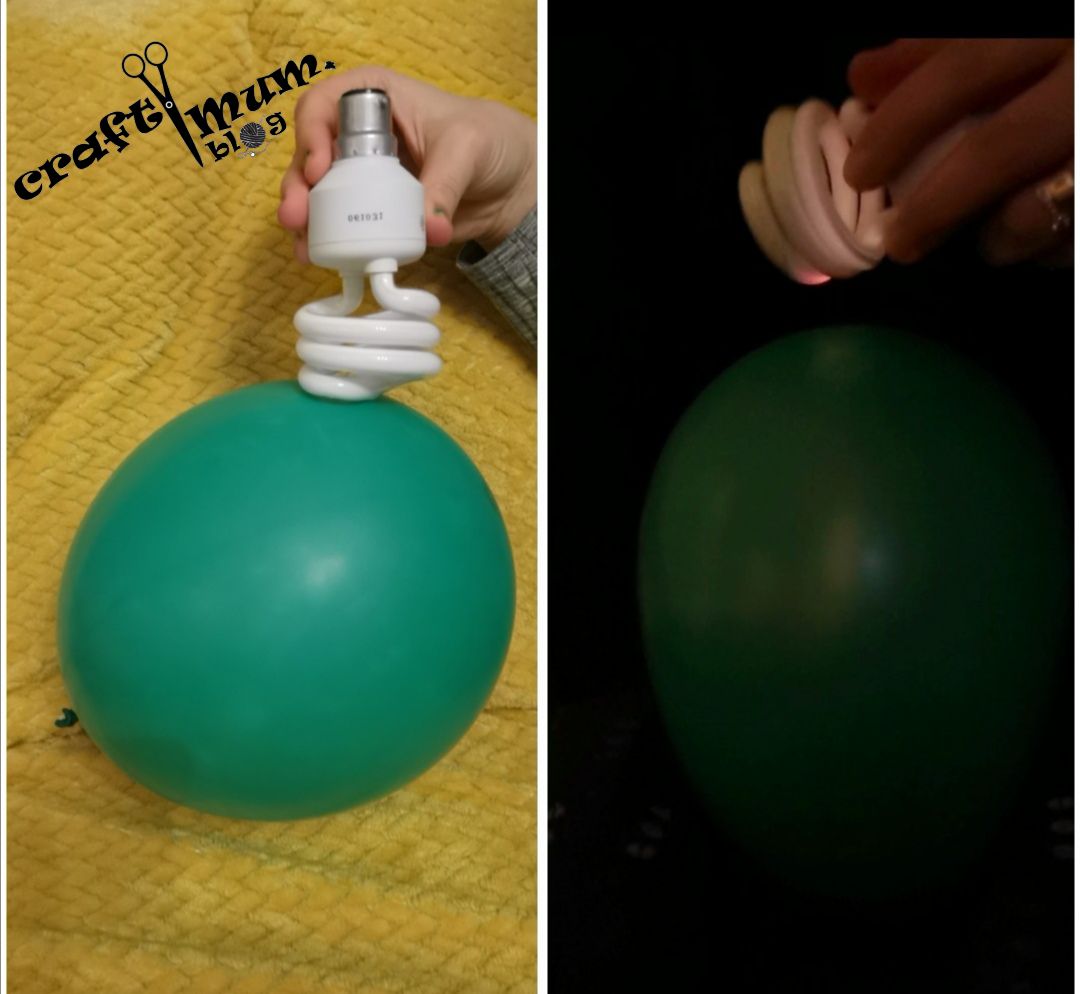Static electricity can provide enough power to light up a fluorescent light bulb for a short time.
All you need for this is a balloon, a woolly scarf and a fluorescent light bulb. Go to a dark room, rub the scarf against the balloon, hold the light bulb from the bottom and bring it close or touch the rubbed balloon section.
As usual I like to use this experiment structure.
1. The questions – What happens if you rub the woolly scarf against the balloon and then touch the light bulb?
2. Prediction – hypothesis
3. Testing & results
Watch for flying light sparks or friction light sparks (while rubbing the scarf). We saw both. Hear the noises the sparks make.
4. Explaination of results
The friction of the two objects creates a transfer of electrons between the two surfaces resulting in static electricity. This static electricity is capable of lighting the bulb. As the balloon surface accumulates enough static electricity it will discharge into the light bulb frequently, resulting in light.
5. Applicability or examples
Ask your child if they ever felt a little zap when touching an object or a person and acknowledge that static electricity is what caused it. The static electricity is used in printers and photocopiers where static electric charges attract the ink, or toner, to the paper. It is also used in dust removal and pollution control technology and air filters.
Please do not I have very little knowledge of electric circuits so I recommend a bit more research if your are teaching older kids.
Have fun!
